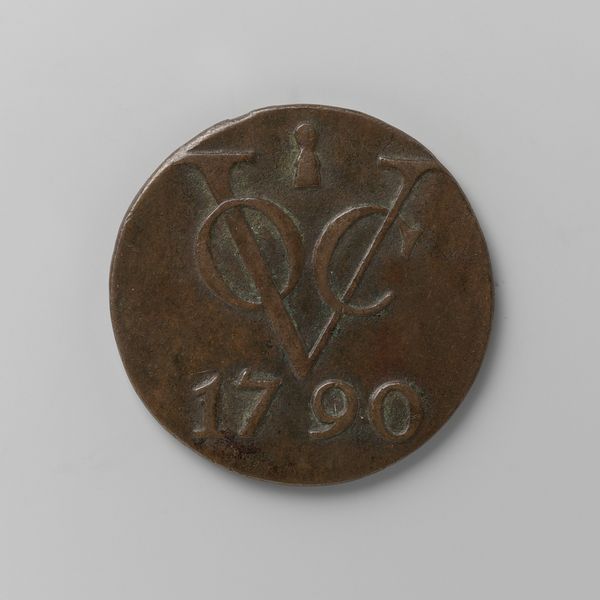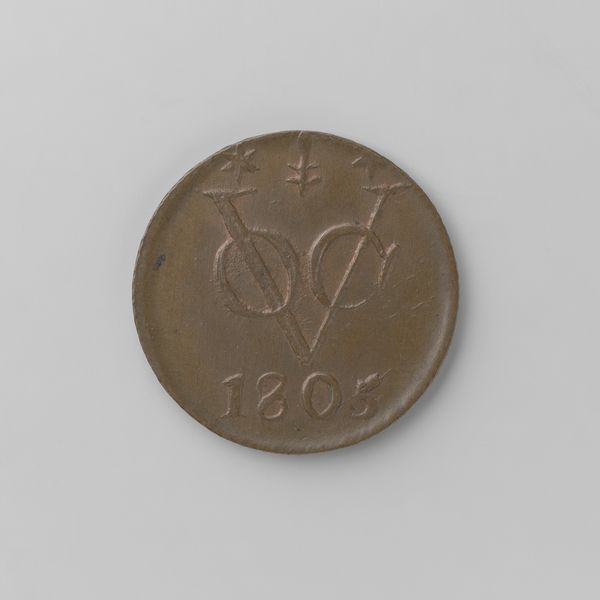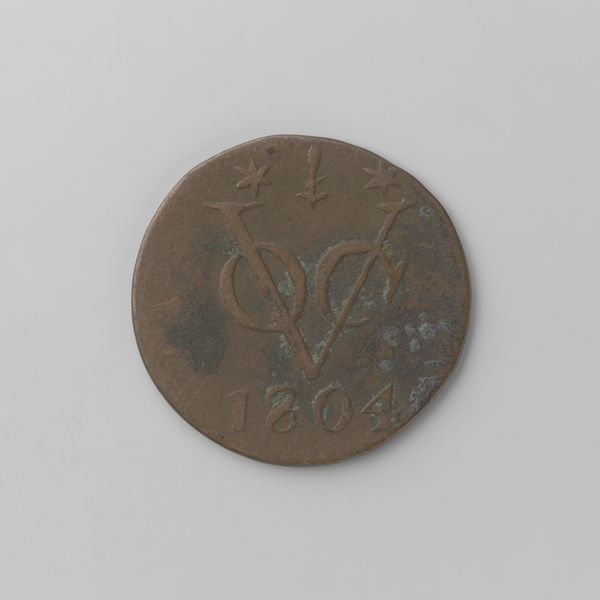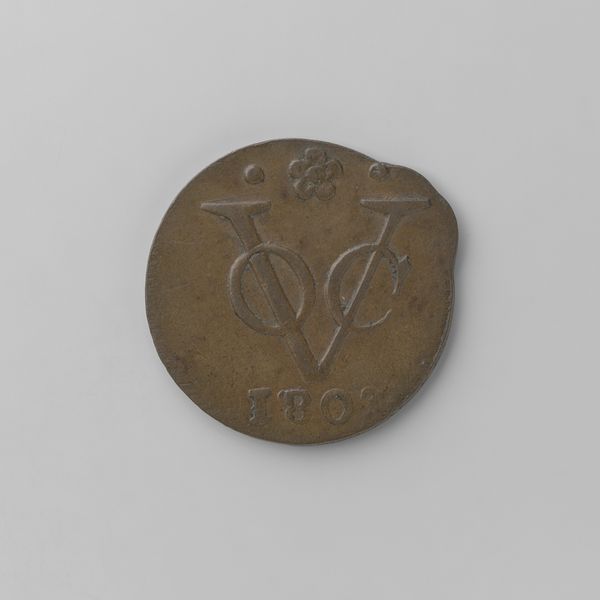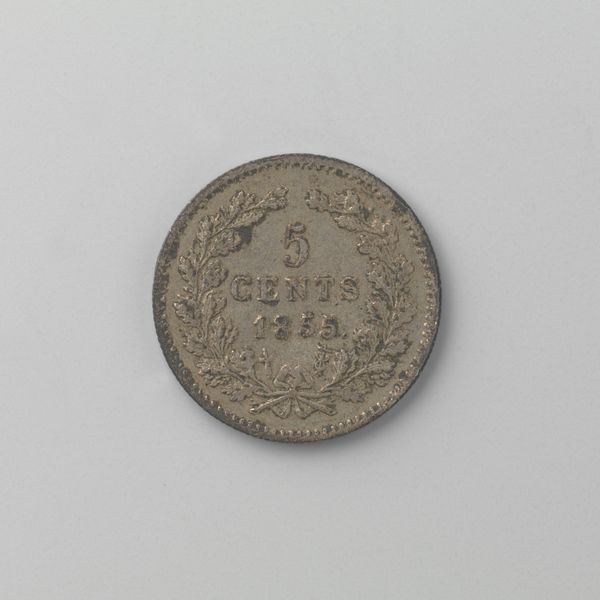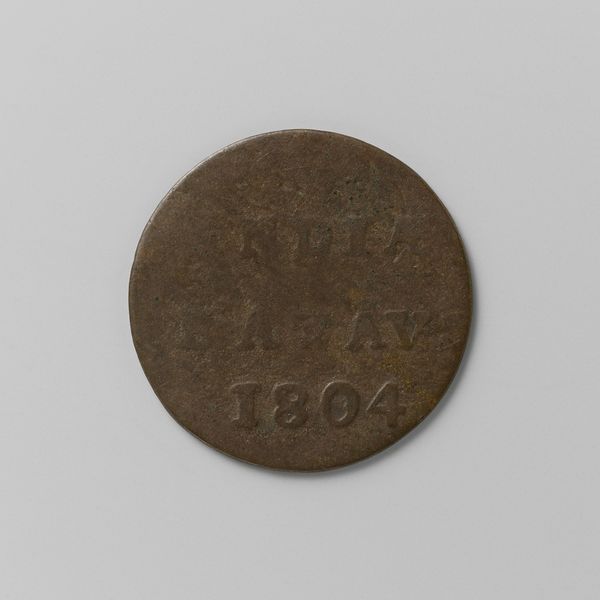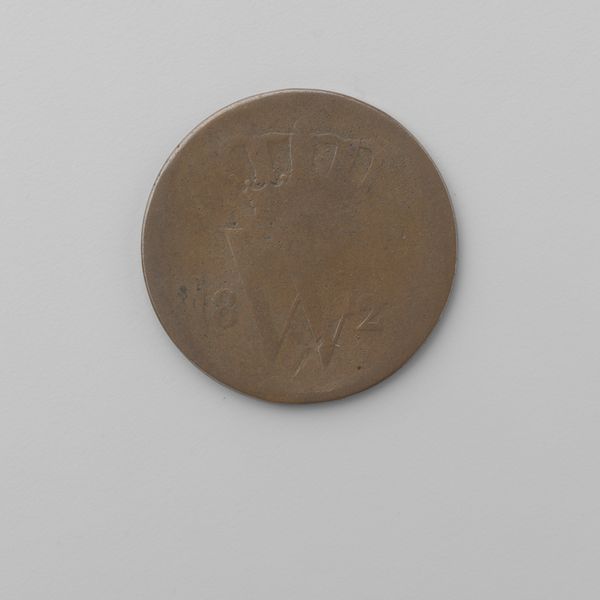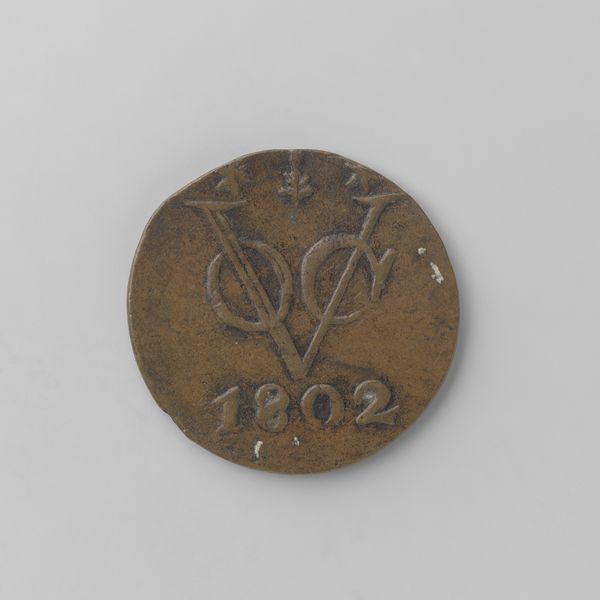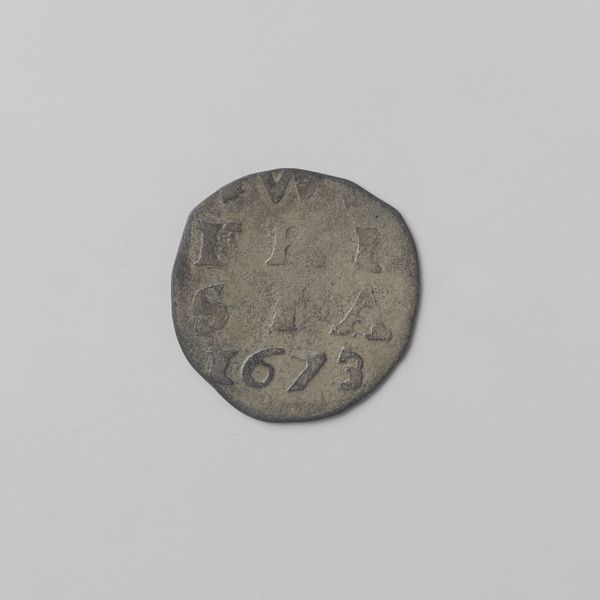
Duit voor Nederlands Indië op naam van de VOC en de stad Utrecht met jaartal 1790 1834 - 1835
0:00
0:00
print, metal, relief
# print
#
metal
#
relief
#
letter design
#
embossed
#
islamic-art
#
history-painting
Dimensions: diameter 2.1 cm, weight 3.14 gr
Copyright: Rijks Museum: Open Domain
Editor: This is a "Duit voor Nederlands Indië" dating to 1790 but actually made between 1834 and 1835. It was minted in the name of the VOC—the Dutch East India Company—and the city of Utrecht, and now it resides in the Rijksmuseum. It feels so small, yet it represents such a vast history. What can you tell me about this little piece of metal? Curator: This "duit", seemingly a small object, speaks volumes about Dutch colonial history and the power structures embedded within it. It represents the confluence of state and private enterprise in the exploitation of resources and people in the Dutch East Indies. What do you make of the inclusion of both the VOC and the city of Utrecht on the coin? Editor: It strikes me as odd. Was it common for cities to co-brand with the VOC like that? It seems like it blurs the lines between public and private entities. Curator: Exactly. Utrecht’s presence highlights how deeply implicated local governments were in the colonial project. The VOC wasn’t operating in a vacuum; it was supported and legitimized by the Dutch state and its various municipalities. The fact that this coin was produced well after the VOC's dissolution in 1799, during the reign of Willem I, reinforces the continuity of colonial ambition under direct royal authority. Who do you think benefitted most from imagery such as this on widely-circulating currency? Editor: It probably normalized the VOC's activities in the eyes of the Dutch public, lending legitimacy to what was, in essence, a form of corporate colonialism. Curator: Precisely! Consider the legacy: wealth accumulation for some in the Netherlands versus exploitation and extraction in the East Indies. This coin is a material manifestation of unequal power dynamics, circulated to reinforce the legitimacy of Dutch rule. Editor: That puts the coin in a very different light for me, far beyond its face value as currency. Curator: It's a reminder that seemingly innocuous objects can be powerful tools for shaping perceptions and reinforcing social structures. It is evidence that seemingly private acts impact an entire group of people.
Comments
No comments
Be the first to comment and join the conversation on the ultimate creative platform.

